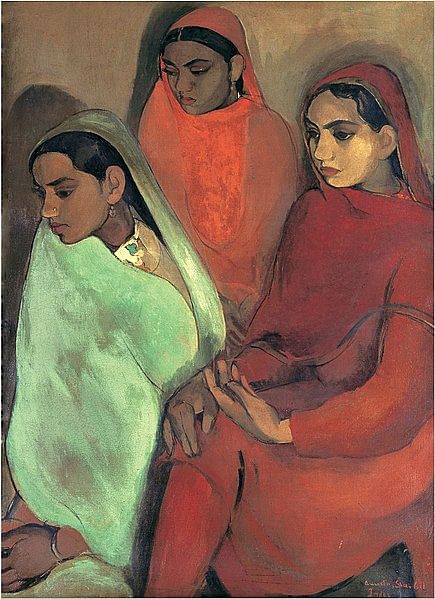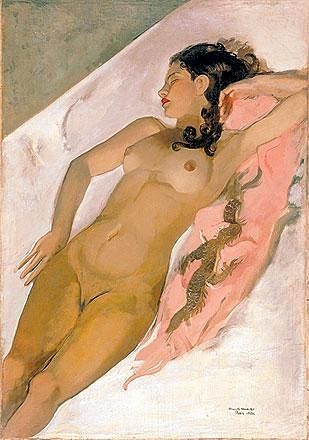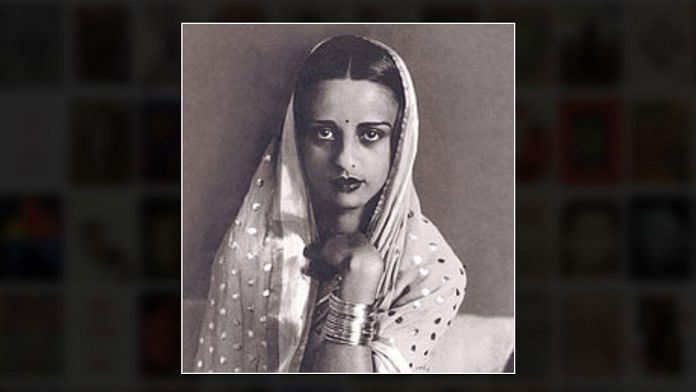One of India’s most respected pioneers of modern art, Sher-Gil’s story has the makings of a classic French film, including a tragically young death.
New Delhi: When Amrita Sher-Gil first saw Khushwant Singh’s toddler son at a party in the lawn of his Shimla house, she insulted him.
“What an ugly child!” she said.
While Singh would come to write of the moment in My Unforgettable Women with humourous retrospection in the future, his wife at the time was far from happy or forgiving. Sher-Gil’s name was struck from the ‘invite list’ for all future gatherings, prompting a response that, till date, echoes as testament to her unapologetic, and often scandalous, fierceness — “I will teach her a lesson by seducing her husband,” Sher-Gil is reported to have said.
Sher-Gil would probably have offended a lot of people even today.
One of India’s most respected pioneers in modern art, Sher-Gil’s story has the makings of a classic French film — filled with passion, fine art, sex, a pinch of over-intellectualisation, and a tragically young death. She died on this day 77 years ago. She was 28 at the time.
Just days before the opening of her first major showing in Lahore in 1941, Sher-Gil fell mysteriously ill and just as suddenly slipped into a coma. The exact cause of her death still remains largely unknown, although it is believed to be health complications from a second failed abortion.
The making of modern art
Sher-Gil was born in Budapest, Hungary, on 30 January 1913 to an eclectic set of artistic parents. Her father was a Sikh aristocrat well-versed in Persian and Sanskrit literature, who met her mother, a Hungarian opera singer just a year prior to their daughter’s birth when she was visiting Lahore.
A young Sher-Gil spent a majority of her early years in Budapest, shuffling back and forth between India and Europe for her education, in the course of which was infamously expelled from a convent school in Shimla for announcing that she was an atheist.
Her love and proclivity for painting was noticed in her early teenage years, and encouraged in significant part by her uncle Ervin Baktay, who was also a former painter. At the age of 16, Sher-Gil travelled to Paris to study painting under artists Pierre Vaillent and Lucien Simon at Grande Chaumiere and later as a formal student of École des Beaux-Arts.
While she was heavily influenced by modern aesthetic sensibilities and a bohemian sub-culture while in Paris, when she returned to India a decade later, she rediscovered herself and her art all over again.
“Although I studied, I have never been taught painting…because I possess in my psychological makeup a peculiarity that resents any outside interference…,” Sher-Gil wrote for an article in The Hindu in 1936.
Also read: Abanindranath Tagore, harbinger of Bengal’s renaissance who remained Swadeshi by brush
A love affair with India and many men
Through the entirety of her short life, love and sex remained in abundance. Sher-Gil had an affair with socialist realist painter Boris Taslitzky while studying in Paris. In 1931 she was briefly engaged to Yusuf Ali Khan, the son of Raja Nawab Ali, a prosperous landowner in Uttar Pradesh. However, at the time, it was rumoured that she was also having an affair with her cousin and future husband Victor Egan, despite the disapproval of her mother.
In his book titled The Vintage Sardar, Singh notes that before Sher-Gil married Victor, he was told that she would visit Lahore and stay in Faletti’s Hotel. “She was said to have made appointments with her lovers with two-hour intervals — sometimes six to seven a day — before she retired for the night.”
Sher-Gil was also known to be bisexual, entertaining various female lovers during her life.
For Sher-Gil, her body was a subject in itself — one worth exploring both physically and intellectually. By tweaking artistic expression in terms of position, placement, colours, shape etc. Sher-Gil used the female form in her paintings to make significant statements about herself and the choices she was making not only as an artist, but also as a woman.
Self Portrait as a Tahitian, 1934, for example, shows Sher-Gil naked from the waist up. Influenced by the paintings of post-Impressionist artist Paul Gauguin, Sher-Gil uses expressive brown-shades of colour to purposefully depict her not-white body as the ‘exotic other.’
For Sher-Gil, who moved back to India at the end of the same year because she felt “haunted by an intense longing to return to India, feeling in some strange inexplicable way that there lay my destiny as a painter,” this was the beginning of a certain reclamation of what it meant for her to be Indian.
Also read: Celebrating Nandalal Bose, artist who rejected everything British & designed India’s constitution
The Sher-Gil we know today
On returning to India, Sher-Gil drew immense inspiration from the Ajanta Caves wall paintings and the sculptures of Ellora, which “led to a series of visual and contextual reorientation in her artistic quest,” as the Indo-American Arts Council writes.
Witnessing the exploitation of her fellow Indians at the hands of the British Empire during colonial rule made Sher-Gil particularly empathetic towards her Indian subjects. She portrayed rural men and women in the harsh realities of their everyday lives, but her subjects always maintained the dignity of their position in the world as people.

Sher-Gil also liberated the image of the Indian woman by showing both the prosaic reality of her existence (Three Girls, 1935, Red Verandah, 1938, Hill Women, 1935) as well as her in a position of sexual confidence and individual identity (Nude, 1931, Two Girls, 1935). Women, for Sher-Gil, were not one-dimensional beings that could fit into neat binaries of victim or winner.

Rather, they are a lot like her own dynamic and complicated identity.
Sher-Gil can perhaps be considered one of India’s first truly sexually liberated feminists, who paved the way for a modernism in Indian art and life that broke the rules when it needed to.







Some sources on the internet are naming her “the Indian Frida K.” .
But I love her paintings! And her story in this article!! She strongly represents the current ideas and encouragement of social justice, sexual freedom and feminism! Esspecially the part about having different lovers, fearless against others approvals or opinions.
Sad to learn that she lived a short life, but she is still heavily inspirational.
Thank you for this article
It’s quite insightful as I have been doing research on Amrita Sher-Gil for the past 1.5 years. Bangalore based Organizational Theatre has devised a play Amrita Sher-Gil and we have done 3 shows of this musical play. The 4th show is slated to be staged on 31st March 2019 in Bangalore. Please do come to watch this visual treat (just like Amrita’s Paintings). 🙂
Please watch a play on Amrita Sher-gil’s life, brought to you by OT in Bangalore. Brilliant play, which uses movement based theatre to depict her life.
Despite her claim to be an atheist,it is discovered that she was an ardent nature lover. Her works and views reflect her philosophy of life abundantly.It would be relevant to say that she was guided by super-natural vital force. Her extrovert behavior definitely reflected her innocence. Thanks a lot to provide this write-up.